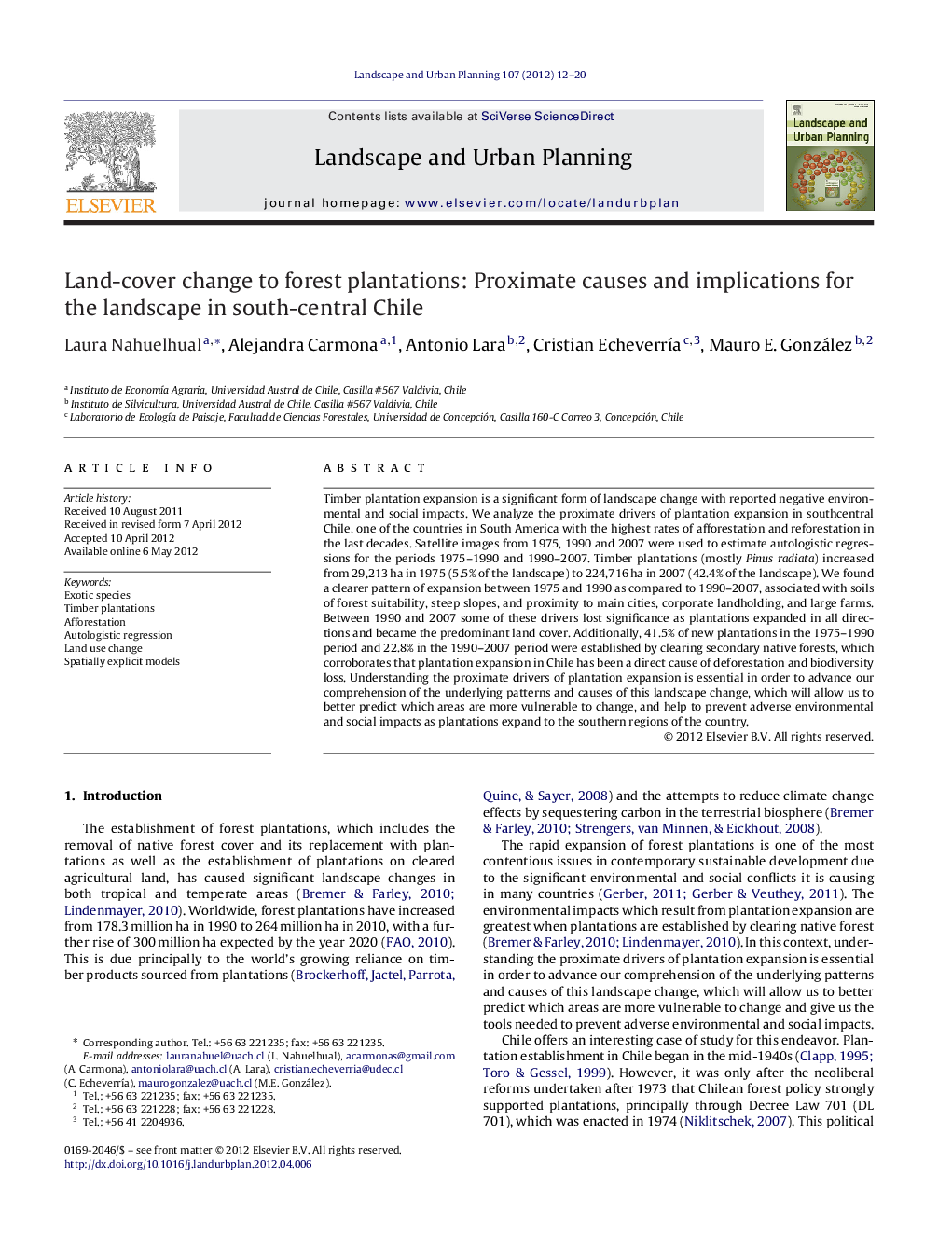| کد مقاله | کد نشریه | سال انتشار | مقاله انگلیسی | نسخه تمام متن |
|---|---|---|---|---|
| 1049428 | 945610 | 2012 | 9 صفحه PDF | دانلود رایگان |

Timber plantation expansion is a significant form of landscape change with reported negative environmental and social impacts. We analyze the proximate drivers of plantation expansion in southcentral Chile, one of the countries in South America with the highest rates of afforestation and reforestation in the last decades. Satellite images from 1975, 1990 and 2007 were used to estimate autologistic regressions for the periods 1975–1990 and 1990–2007. Timber plantations (mostly Pinus radiata) increased from 29,213 ha in 1975 (5.5% of the landscape) to 224,716 ha in 2007 (42.4% of the landscape). We found a clearer pattern of expansion between 1975 and 1990 as compared to 1990–2007, associated with soils of forest suitability, steep slopes, and proximity to main cities, corporate landholding, and large farms. Between 1990 and 2007 some of these drivers lost significance as plantations expanded in all directions and became the predominant land cover. Additionally, 41.5% of new plantations in the 1975–1990 period and 22.8% in the 1990–2007 period were established by clearing secondary native forests, which corroborates that plantation expansion in Chile has been a direct cause of deforestation and biodiversity loss. Understanding the proximate drivers of plantation expansion is essential in order to advance our comprehension of the underlying patterns and causes of this landscape change, which will allow us to better predict which areas are more vulnerable to change, and help to prevent adverse environmental and social impacts as plantations expand to the southern regions of the country.
► Plantations grew ten-fold in 32 years at 6375 ha year−1 (6.4% annual rate).
► A large percentage of plantations (32%) occurred on large corporate landholdings.
► A large percentage of new plantations directly caused deforestation.
► The autologistic model can help predict areas most vulnerable to future change.
Journal: Landscape and Urban Planning - Volume 107, Issue 1, July 2012, Pages 12–20